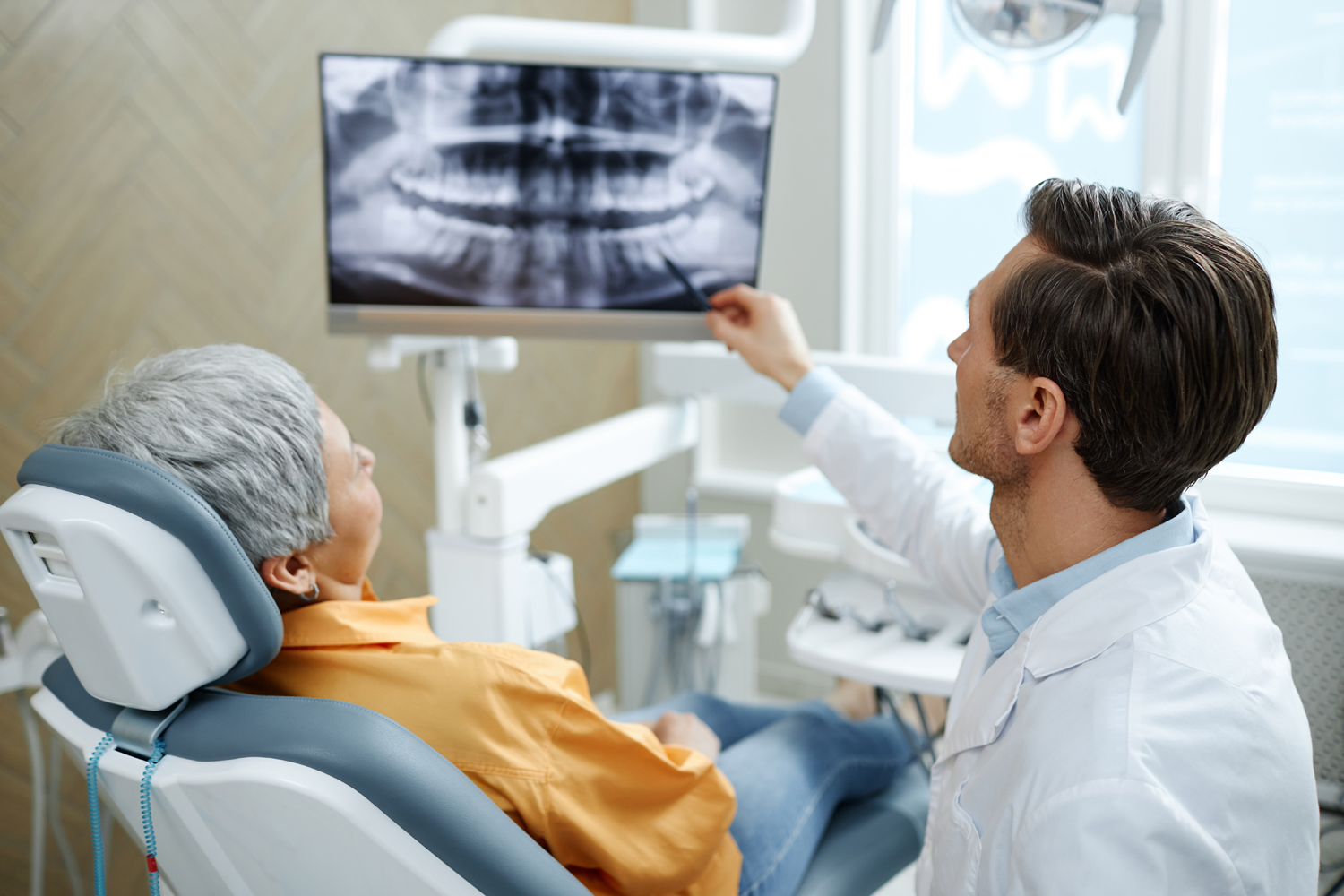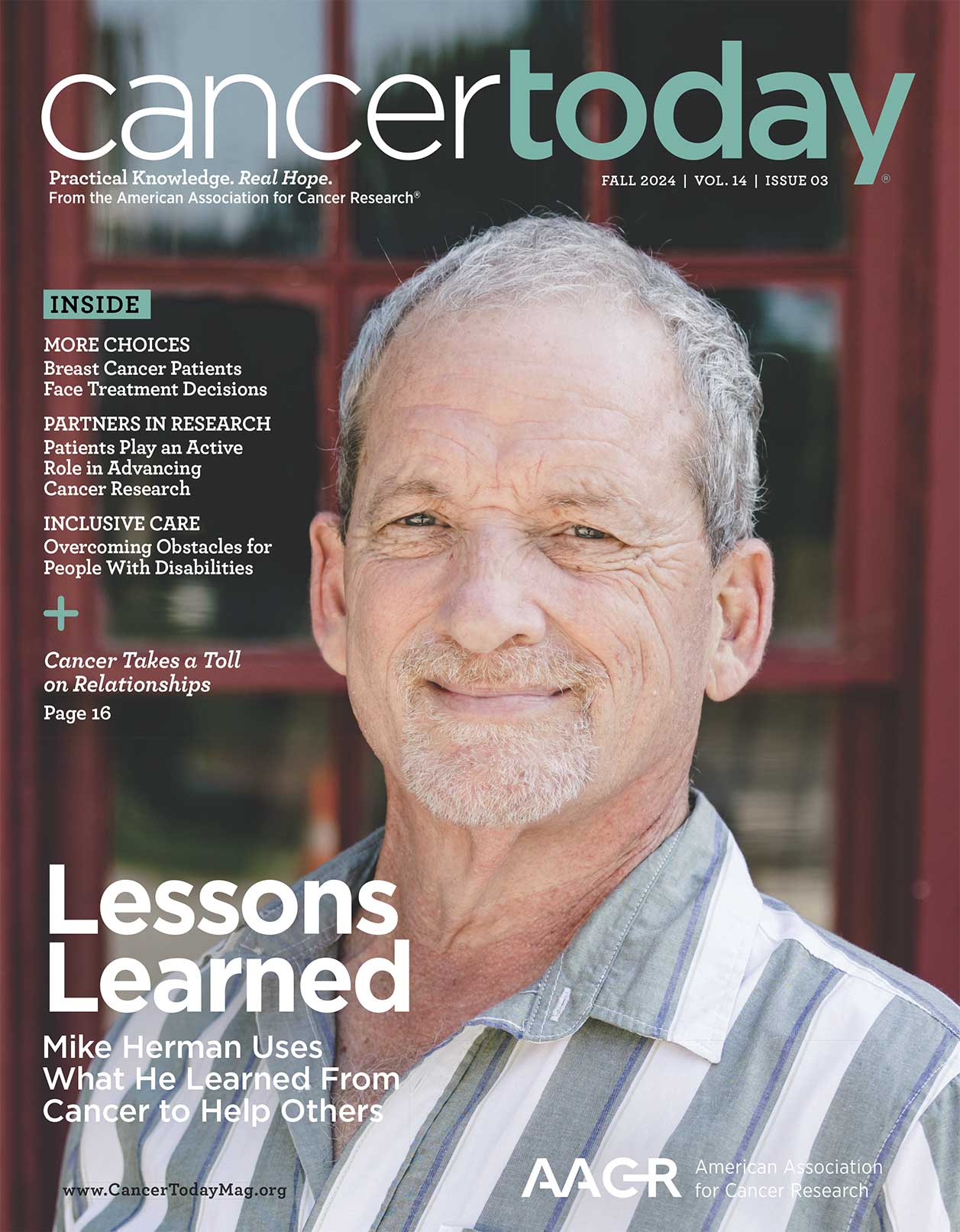Every week, the editors of Cancer Today magazine bring you the top news for cancer patients from around the internet. Stay up to date with the latest in cancer research and care by subscribing to our e-newsletter.
Good Oral Health Linked to Longer Survival in Head and Neck Cancer
Proper dental hygiene appears to be associated with better overall survival among people with head and neck cancer, according to a study published online Sept. 19 in the Journal of the National Cancer Institute. The study analyzed the oral health habits of 2,449 people with head and neck squamous cell carcinoma during the decade prior to their diagnosis. Researchers found both having a high number of natural teeth and making frequent dentist visits were linked to higher overall survival, BBC Science Focus reported. Having no natural teeth was associated with a 15% lower five-year overall survival rate compared with having at least 20 natural teeth. (Most adults have 32 teeth, or 28 if they had their wisdom teeth removed.) Compared with those who had no dental visits, people who saw the dentist at least six times in the decade before diagnosis had a higher five-year overall survival rate (74% vs. 54%) and nearly double the overall survival rate at 10 years (60% vs. 32%). Researchers noted regular dental check-ups can lead to earlier detection of head and neck cancer, producing better outcomes. “Our hope is that these findings become a standard part of guidelines implemented for the prevention and management of head and neck squamous cell carcinomas in the near future,” Antonio L. Amelio, a study author and a head and neck oncology researcher at Moffitt Cancer Center in Tampa, Florida, told BBC Science Focus.
Breast Milk Could Be Used for Early Detection of Breast Cancer
Breast milk could be more effective than blood when it comes to early detection of breast cancer among women who recently gave birth, according to results of a small study published online Sept. 14 in Cancer Discovery. Researchers analyzed both blood and breast milk samples from 15 women who were diagnosed with breast cancer either during pregnancy or while breastfeeding. They discovered 13 of the breast milk samples contained cell-free tumor DNA (ctDNA), while only one blood sample had ctDNA. “We have shown for the first time that breast milk obtained from breast cancer patients contains sufficient ctDNA to be detected by liquid biopsy and that this ctDNA can be detected even before breast cancer can be diagnosed using conventional imaging,” Cristina Saura, co-lead author of the study and a medical oncologist at Vall d’Hebron University Hospital in Barcelona, Spain, told Oncology Central. Researchers said liquid biopsy using breast milk could become a viable option for detecting breast cancer in these patients, who often are diagnosed at later stages since the physical changes associated with pregnancy make it more difficult to detect cancer with standard methods. “In the same way that a heel prick is performed on all newborns, collecting a breast milk sample from all women after birth for breast cancer screening could also be considered,” Saura said. A larger study involving 5,000 women is planned.
Study Finds Zantac Use Does Not Lead to Elevated Cancer Risk
People who previously took Zantac (ranitidine) do not have a higher risk of developing cancer compared with those who used other histamine-2 receptor antagonists (H2RAs), according to results of a study published Sept. 19 in JAMA Network Open. Intended to treat acid reflex and peptic ulcers, Zantac was once the third most prescribed gastrointestinal medication, MedPage Today reported. However, in 2019, the Food and Drug Administration (FDA) discovered some versions of the drug contained the carcinogen nitrosodimethylamine (NDMA), leading to it being pulled from store shelves. The study looked at health outcomes for 1.18 million people across seven countries who took H2RAs for at least a month between January 1986 and December 2020. Researchers found 15.92 cases of cancer per 1,000 person-years among people who used Zantac, compared with 15.65 cases per 1,000 person-years for those who took other H2RAs not containing NDMA. “Although a large amount of NDMA would be harmful, NDMA levels in ranitidine found in preliminary tests conducted by the FDA barely exceeded the amount found in common foods,” the authors wrote. While the Zantac recall prompted concerns in many people who took the medication, experts say these results should assuage their fears. “If a patient expresses their concern about their ongoing cancer risk due to ranitidine, I can point to this study to reassure them,” Reid M. Ness, a gastroenterologist at Vanderbilt University Medical Center in Nashville, Tennessee, who was not involved in the study, told MedPage Today.
Cancer Today magazine is free to cancer patients, survivors and caregivers who live in the U.S. Subscribe here to receive four issues per year.





